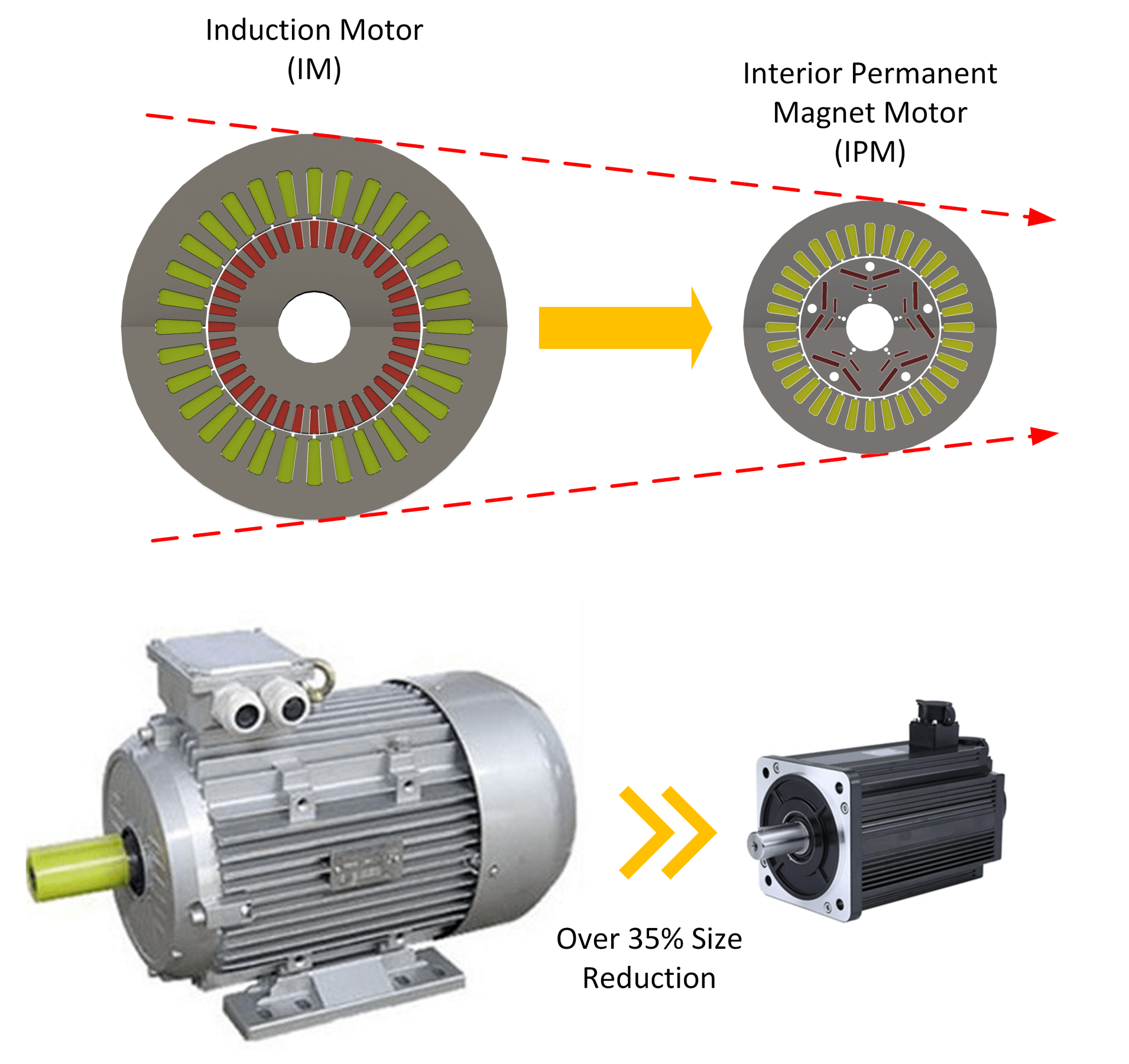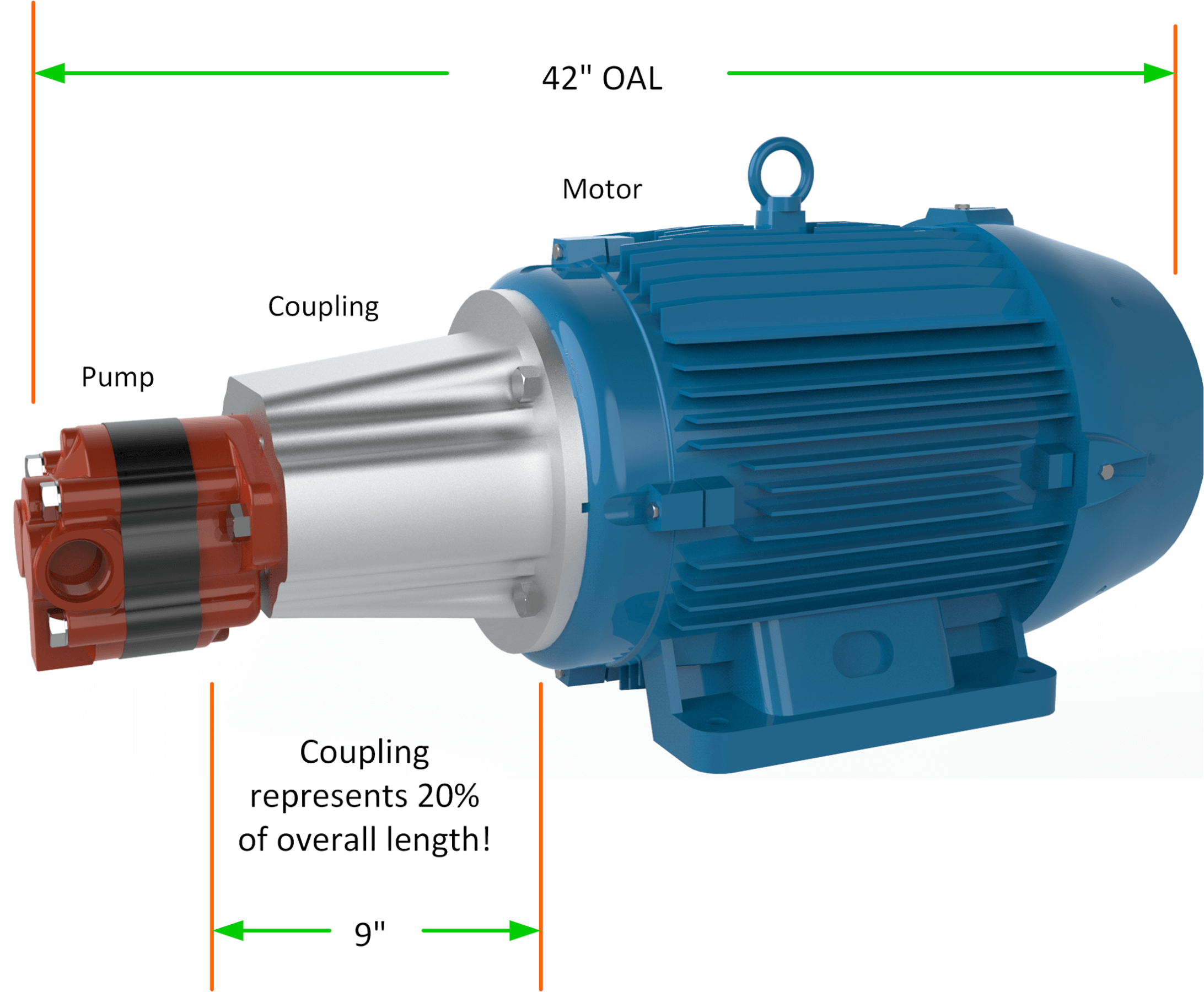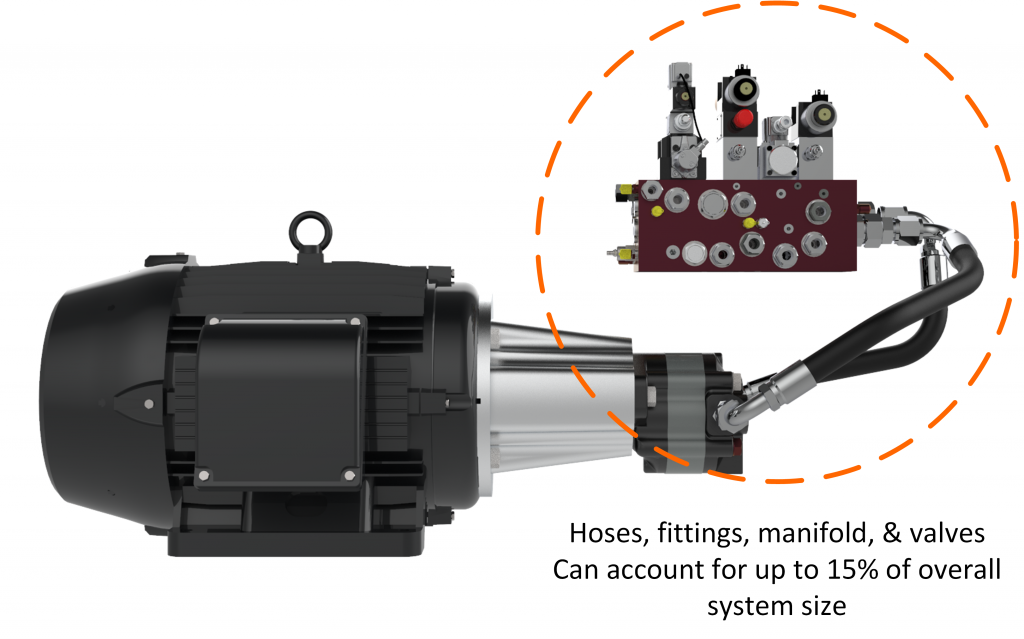Size Reduction
Hydrapulse® Technology
eallealeadiThus The Hydrapulse was developed on industry-proven, power-dense technology that, until now, has been too expensive to incorporate into hydraulic power units. At the top of this technology list is our permanent magnet (servo) motor. Servo motor hydraulic power units have been around for decades but have only made headway into markets that have extremely forgiving duty cycles such as the injection molding industry, where extremely long dwell times under pressure have made an ROI business case for servo hydraulics. We took this proven technology and started from a clean sheet of paper to develop a product that utilizes this motor type but is actually cost effective, simple to use and made from the ground up for fluid power. Now, any system designer, OEM, or HPU build center can incorporate cutting edge servo hydraulic technology without extensive skills, labor and programming requirements. The other primary reason for the extreme compact nature of our technology is the integration of so many components that would normally take up space. Let’s take a simple 30 Horsepower (22 kw) industrial HPU and break down how the Hydrapulse technology provides such amazing size reduction. Permanent magnet motors (PM) and, more specifically, the Interior permanent magnet motor (IPM) is far superior in many ways to the traditional induction motors that have dominated the market for the past 130 years. Nikola Tesla invented the induction motor in 1887 and its simplicity, robustness and ability to be powered directly off of the A/C power grid led to its widespread and near total market capture until the late 20th century. While there are many types of induction motors and permanent magnet motors (radial flux vs. axial flux, for example) we will focus on the general benefits of IPM motors versus the traditional radial flux induction motor. An induction motor must “induce” an electromagnetic force on both the rotor and the stator through copper windings to provide output torque. This means that a lot of copper is needed throughout the motor leading to a bulkier and heavier architecture than a PM motor. A PM motor utilizes only windings on the stator and magnets on the rotor. This reduces the weight and volume of the copper wire needed to create the same electromagnetic force of an induction motor of similar power. The ability for the IPM motor to create much stronger magnetic fields than its induction counterpart are the primary reason for the power density difference. The strong and permanent nature of the magnets also allow for full torque at zero shaft speed, whereas an induction motor’s output torque drops off significantly as the output speed is lowered. While it’s often neglected, the pump / motor coupling on a hydraulic power unit accounts for a significant space on the overall system. This lead us to need a more compact hydraulic power unit. By closely coupling the pump to the motor with completely custom integration, we are able to reduce the size by over 20%. This also removes weight, assembly labor and failure points. Additional weight and size are reduced by this close integration due to the fact we do not need as much housing material between all the components. The pump can share a wall with the motor or hydraulic manifolds, etc. The next big factor that helps us reduce size is the integration of the pump directly into the manifold, thereby eliminating any fittings, hoses, manifold, mounting brackets, etc. This creates a huge space savings and again removes weight, assembly labor and failure points. Welcome to the age of digitally controlled hydraulics! We no longer need complex and crazy manifold systems to control pressure and flowrate, it’s built into every Hydrapulse EHPU system.Compact Hydraulic Power Unit
Increased Performance With Up to 86% Size Reduction
Permanent Magnet Motor Density
Pump / Motor Coupling
Hoses, Valves and Manifold



